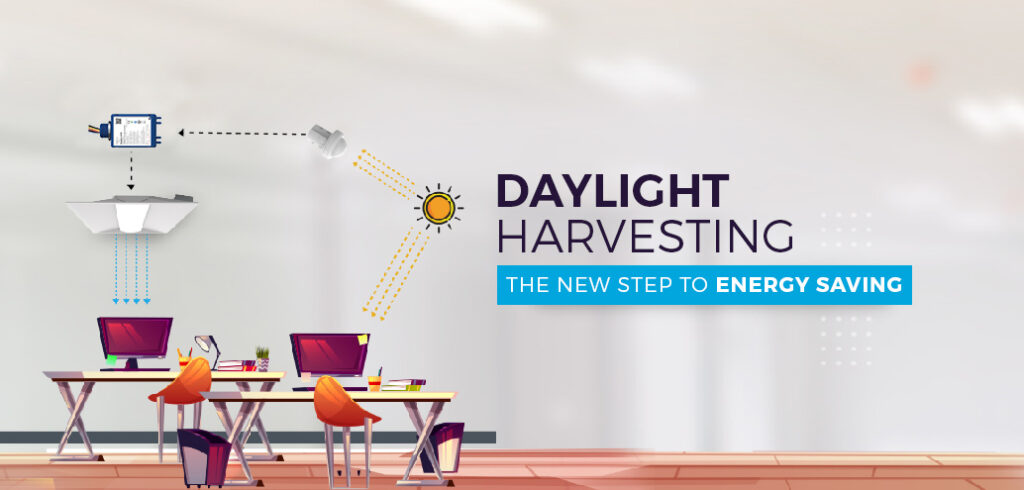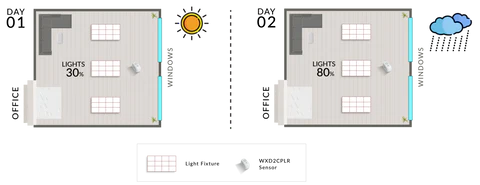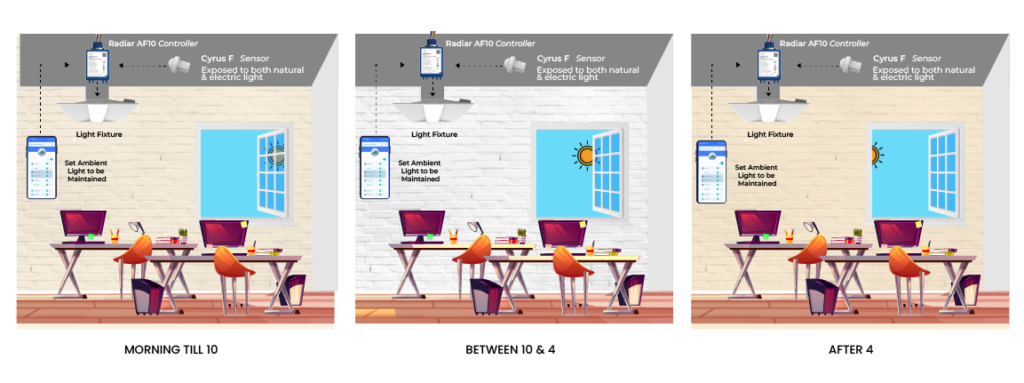What, How and the Benefits of Daylight Harvesting!

“Artificial lights are responsible for almost 17% of the energy consumed in a commercial building and can be even higher depending on usage,” says Commercial Buildings Energy Consumption Survey (CBECS).
Natural light plays a crucial role in our day-to-day life. It affects our mood and the way we feel. A source of illumination and a mandatory requirement for health, getting enough natural life is important. After realizing the health benefits and the demand to reduce energy consumption, more building owners are trying ways to get sunlight back to their buildings. The ways and techniques adopted to get enough natural light by reducing the usage of the artificial light is called daylight harvesting.
What is Daylight Harvesting?
Daylight Harvesting, also known as daylight response is the most advanced yet simple way to reduce energy consumption. This automatic lighting control strategy adjusts artificial light level based on the available daylight. It is most effective in areas that receive more natural light through windows or doors. This technique not only reduces energy usage but also improve occupant satisfaction
How Does Daylight Harvesting Work?
In daylight harvesting, the light sensors, otherwise called photocell sensors, detect the available light level in an area. These sensors will send data to the controller and based on the information received, the controller will adjust the intensity of light level.

Types of Daylight Harvesting Systems
There are two main types of daylight harvesting – they are open-control controls and closed-loop controls. The functionalities and application of these systems are entirely different from one another. Open-loop systems measure only the available natural light whereas closed-loop systems measure natural and artificial light.
In an open-loop control system, the light sensor detects and analyzes the intensity of available natural light. Based on this intensity level, the output of artificial light is adjusted. In most cases, these sensors are installed in an open area or near a window through which daylight enters. Since electric light is not used for feedback, it is considered as an open-loop. It is mostly used in hallways, parking lots, garages etc
In a closed-loop control system, the light sensor detects and analyzes both natural and artificial light intensity. The sensor will adjust the artificial light’s intensity to balance the ambient light intensities based on the detected intensity level. It is mostly applicable for classrooms, small offices, studios, museums and more.

In Custom Daylight harvesting, users can experience a whole new level of daylighting by invoking scenes of their choice. They can activate the scene setting when the daylight sensor detects an ambient light level at :
- Less than a configured light level
- In between a range of configured light levels
- Greater than configured light level

Why should you use it?
Energy Savings
By adjusting the intensity of lights and turning ON/OFF luminaries based on the availability of natural light, a considerable amount of energy can be saved.
Comfort and Convenience
The lights are adjusted automatically based on the requirement to enhance the occupant’s comfort and convenience.
Increased productivity
Creating the right amount of light as and when needed, has immense benefit. This lighting system will be in tune with the circadian rhythm, which results in occupants’ emotional and physical well-being. Occupants will have increased concentration and become more productive.
Meet Codes and Standards
Energy codes and standards are crucial for energy-efficient buildings. They offer environmental benefits and reduce energy expenditures. Daylight harvesting helps building owners to meet energy Code standards like ASHRAE 90.1 [9.4.1.1 (e), 9.4.1.1 (f), 9.4.1.2 (d)], Title-24 [130.1 (d), 130.2 (c)], IECC [C405.2.3, C405.2.6.1].
In short,
Daylight meets the illumination requirements besides energy savings and psychological benefits. The most widely used lighting control Daylight harvesting reduces more than 25% of energy cost and consumption.
To know more about lighting control strategies, click here!
Disclaimer: The original version of the blog was published in WiSilica.com